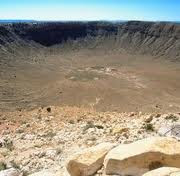 |
| Device for wrapping an asteroid with "smart film" |
Headlines read “ASTEROID ON COLLISION COURSE WITH EARTH!” Before people start forming cults and building underground shelters, the government comes on all network channels to allay everyone’s fears. A spacecraft is on its way to fix the problem.
 |
| Asteroid |
It will be a little more difficult getting this smart film onto the surface of an approaching asteroid. Our NASA or SpaceX spacecraft has delivered a payload that is now approaching the asteroid. The payload begins to spin about its longitudinal axis. The outer panels come off. Twelve or more weights on tethers begin to spool out from the payload. At some point the outer edges of the smart film begin to appear and spread in a circular geometry. The tethers run all the way to the center of the circle of smart film. Likewise, a strand of the same stout material runs around the perimeter of the film and at intermediate points resembling a spider web in structure. This is to keep the more fragile smart film intact as it engages and wraps around the asteroid. The weights on their tethers act much as the bolas used by South American gauchos. As they wrap around their target, they become entangled and hold the smart film in place around the asteroid.
 |
| Asteroid strike. |
This is and is not a far-fetched scenario. Here’s why it is. Because of its simplicity of construction, we will custom construct this device to match the size of the asteroid. We will know the direction of rotation of the asteroid and how fast it is going, so the payload will rotate accordingly. We can simulate the contact sequence to figure out how long the tethers must be to properly engage and fasten the smart film to the asteroid. Let’s now get on to the hard part--the film itself.
At this point in our technology, it would most likely be similar to an OLED; organic light-emitting diode. This OLED would be sprayed onto a flexible substrate and attached to an absolute paucity of chips to do the job it needs to do. In fact, a roll-up TV just debuted at the annual CES show. We may soon have the technology to send a 3D printer that converts the asteroid material into the film and crawls around the asteroid, mining material and laying down film. Or the asteroid could be sprayed with a substance that hardens into a film as the spacecraft sprayer circles the errant rock. There are several feasible schemes for covering the asteroid with an OLED-type film. The circuitry controlling the film will include some kind of inertial solar system guidance system and sensors to tell the film where to absorb light and where to reflect light in order to guide the asteroid away from its collision course with Earth. The Earth is saved! Thank you! Thank you! Please quiet down; there’s more. Here's why it is a far-fetched idea. You thought I'd forgotten. The force of photons on the dark areas of the film may not be enough to stop the rotation of a massive asteroid or nudge it out of the way in time to save the Earth from immediate disaster. That is why we need more vigilance in detecting far ahead of time those objects that could be dangerous, giving us the time for a scheme like this to work.
We will, or at least should, have this technology developed before it is needed. Humankind’s demands on Earth for raw materials will eventually outstrip the Earth’s ability to deliver. With this technology we can send out these intelligent tarps to round up material in our solar system and bring it back to orbit around the Earth where it can be more easily accessed. It beats the heck out of lugging mining equipment all the way to the asteroid belt to look for stuff, mine it, then transport it back--expensive and risky. It will wind up being one of the simple tools for the complicated job of keeping mankind from going the way of the dinosaur.
Not only can this device go get material from space, it may be the tool to allow us keep our access to space. Unfortunately, space debris has become a serious impediment to the future of all space programs. Particularly troublesome are the large pieces. These range from rocket parts to defunct satellites. You can't just blow them apart because that just creates more debris. The ideal solution is to bring them down to burn up in the Earth's atmosphere. This type of application is where smart film shines. Fifteen thousand objects weighing more than 220 pounds make up 98% of space debris by mass. There is a fear of these objects colliding and breaking into smaller pieces. SpaceX's new spacecraft, the Falcon Heavy, is scheduled to launch this year. With a payload of 117,000 pounds it could carry a swarm of miniature smart film modules into space to take down the most serious of these orbital debris problems at the rate of about 250 pieces per launch. Six launches, the number of manned lunar missions, would eliminate 98% of space junk.
 |
| Meteor Crater in Arizona |

I'm totally jazzed. Blazing fast narrative fiction, which could very well really happen, wrapped in the technology to deal with the threat. I love the novel's hip, vivid narrative style that doesn't get too fancified, and puts you right in the action. This Glen Hendrix is for real!
ReplyDelete